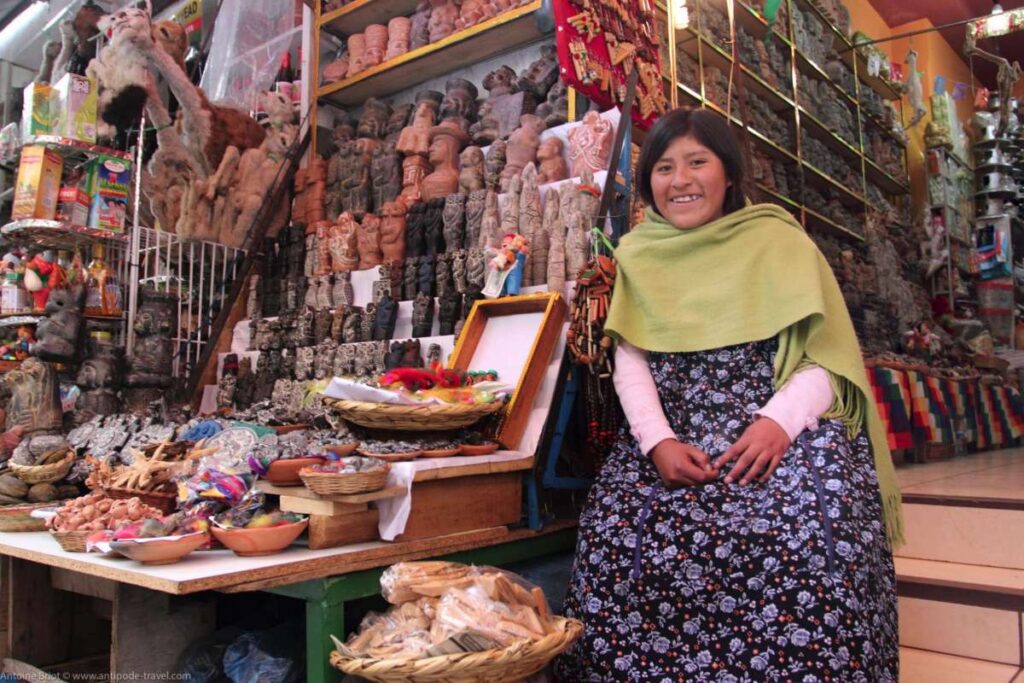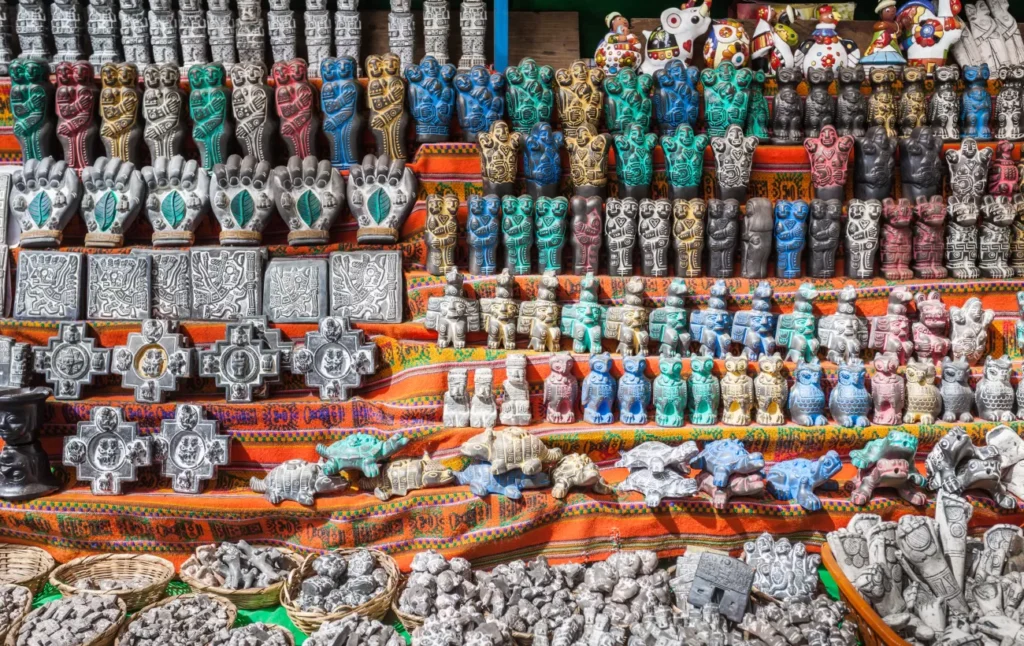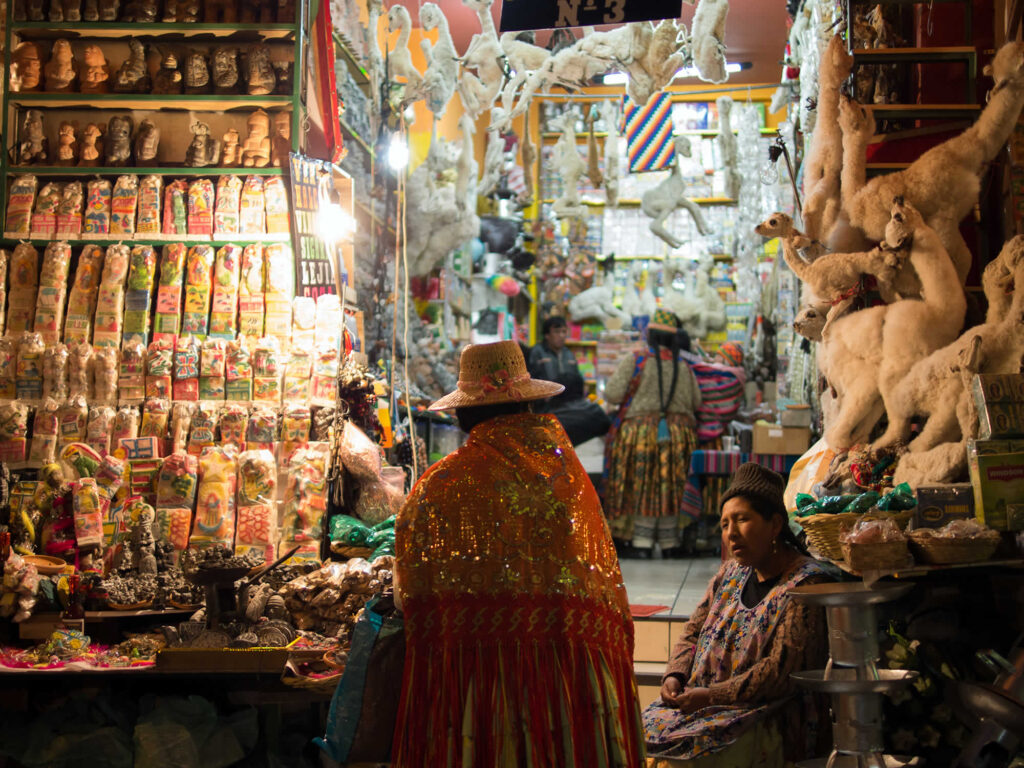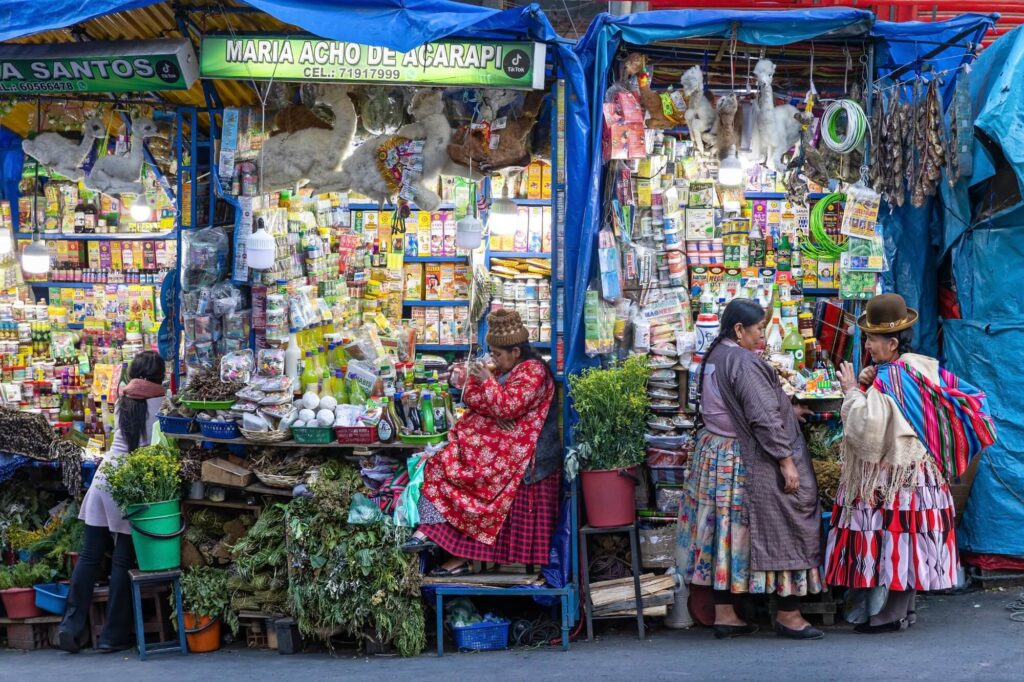In the chaotic, colorful heart of La Paz, Bolivia’s bustling capital nestled in the Andes, there’s a street unlike any other. Calle Linares, lined with shops and stalls, buzzes with the usual market energy—chatter, bartering, the rustle of textiles. But look closer, and you’ll notice something different: dried llama fetuses, owl feathers, ritual talismans, and bundles of mysterious herbs. This is the Mercado de las Brujas—the Witches’ Market—where ancient Andean mysticism blends with modern city life in a surreal, spiritual marketplace.
A Market Steeped in Belief

To outsiders, the Witches’ Market may seem bizarre, even macabre. But for the Aymara and Quechua peoples of Bolivia, whose traditions stretch back to pre-Inca times, this market is a vital part of spiritual and cultural life. Here, traditional healers known as yatiris sell supplies used in ceremonies, rituals, and daily offerings to the Pachamama—Mother Earth.
Far from being relegated to myth, these beliefs remain deeply embedded in the daily rhythms of many Bolivians. In a country where indigenous worldviews and Catholicism coexist, spirituality often means honoring both saints and spirits.
The Fetuses and Their Meaning

The most iconic—and shocking—items sold in the Witches’ Market are the dried llama fetuses. Displayed hanging from stalls or nestled in baskets, these are not grotesque novelties; they are offerings. According to Aymara tradition, burying a llama fetus beneath the foundation of a new building brings good fortune and appeases the Pachamama, ensuring protection, health, and prosperity.
For larger construction projects, such as homes or businesses, some builders believe it’s essential to make such an offering before breaking ground. It’s said that if you ignore the ritual, you risk angering the spirits—and attracting bad luck or worse.
Magic, Medicine, and Markets
Beyond llama fetuses, the market brims with an incredible array of herbs, powders, amulets, and concoctions, each with a purpose. Need protection from jealousy or bad energy? There’s a potion for that. Want to win someone’s love or improve business? Choose from dozens of colorful charms and candles.
Yatiris often offer spiritual readings, using coca leaves to divine a client’s past, present, and future. The coca leaf—used legally in Bolivia for ritual, medicinal, and social purposes—is sacred in Andean culture. It’s chewed, brewed into tea, or used in offerings to seek blessings or guidance.
These are not sideshow acts but respected traditions. Many locals visit the market before big life events—marriage, travel, childbirth, business launches—seeking spiritual balance and protection.
Meeting the Yatiris
The true keepers of the market’s magic are the yatiris, traditional healers often dressed in black hats and colorful shawls, their hands stained from coca leaf readings and herbal preparations. Many have inherited their role from generations past, trained through years of spiritual apprenticeship.
Talking to a yatiri can be an enlightening experience. They speak of energy, cosmic balance, and the interconnectedness of all things. Their guidance is sought not just by locals, but increasingly by curious travelers, spiritual seekers, and those drawn to the mystery of the Andes.
Tourism and Transformation

While the Witches’ Market remains a sacred space for many Bolivians, it has also become a popular tourist attraction. Some shops now cater to foreign visitors, selling Andean crafts, silver jewelry, and mystic trinkets that blend tradition with market appeal.
This tourism boom raises both opportunities and concerns. On the one hand, it brings income to local vendors and helps preserve ancient knowledge. On the other, it risks diluting spiritual practices or turning sacred items into souvenirs.
Respectful tourism is key. Visitors are welcome, but understanding the meaning behind the items—and engaging with the culture rather than merely photographing it—makes for a more authentic and enriching experience.
A City of Contrasts
The Witches’ Market is one of many contradictions in La Paz. Towering colonial cathedrals overlook indigenous rituals. High-speed cable cars glide over ancient neighborhoods. A modern capital pulses with pre-Columbian beliefs.
This coexistence gives La Paz its unique identity—a place where the past is never truly gone, but alive, whispering from the mountain winds and echoing through ritual smoke in the market’s stalls.
Final Thoughts
A walk through the Witches’ Market in La Paz is not just a quirky detour—it’s a portal into the soul of Bolivia. It’s where belief systems endure against the odds, where old ways resist erasure, and where daily life is inseparable from the sacred.
Whether you come with curiosity, reverence, or a desire to understand, the Witches’ Market invites you to glimpse a world where magic and meaning still dance through the everyday—and where the spiritual is as close as the nearest bundle of coca leaves.
